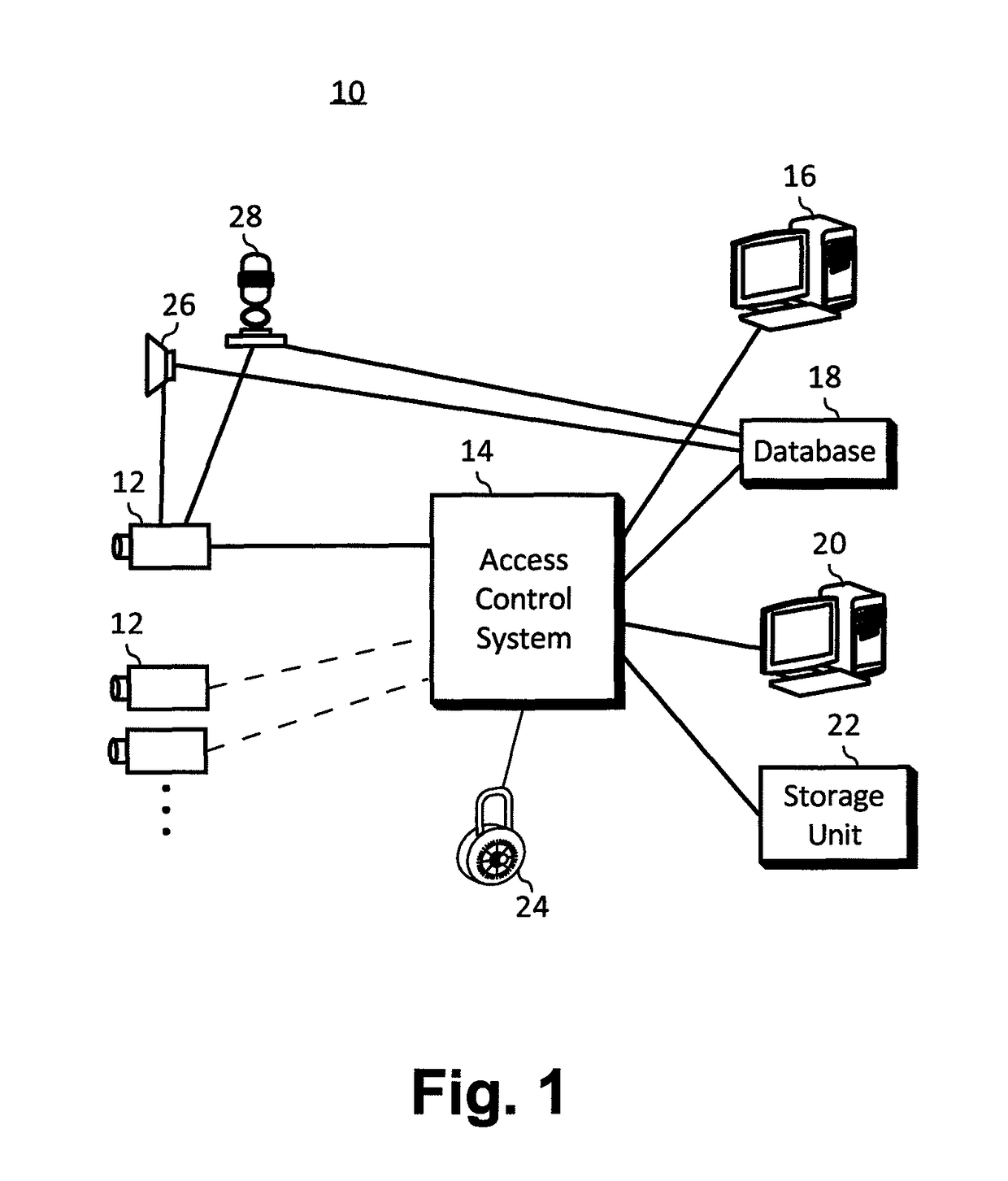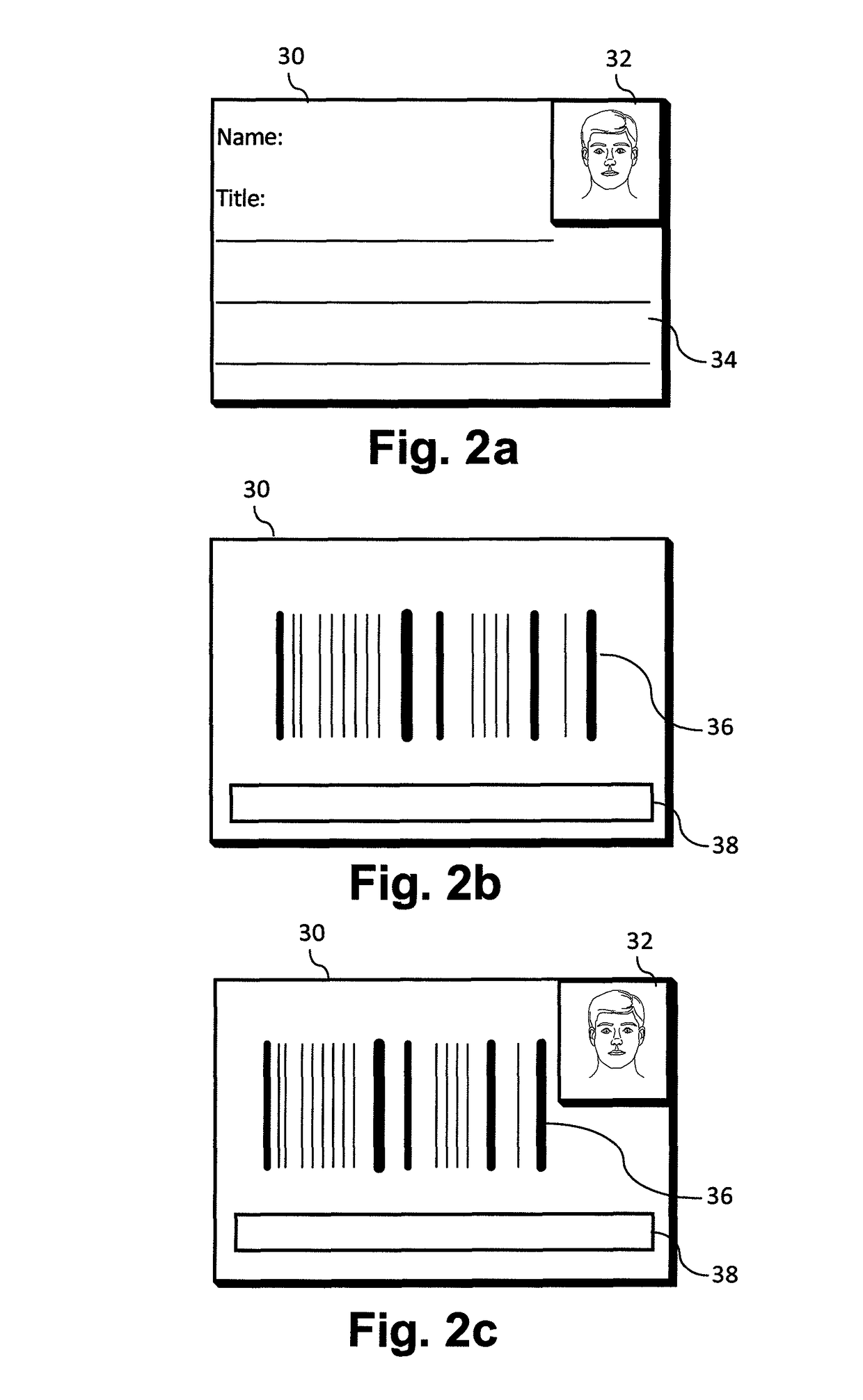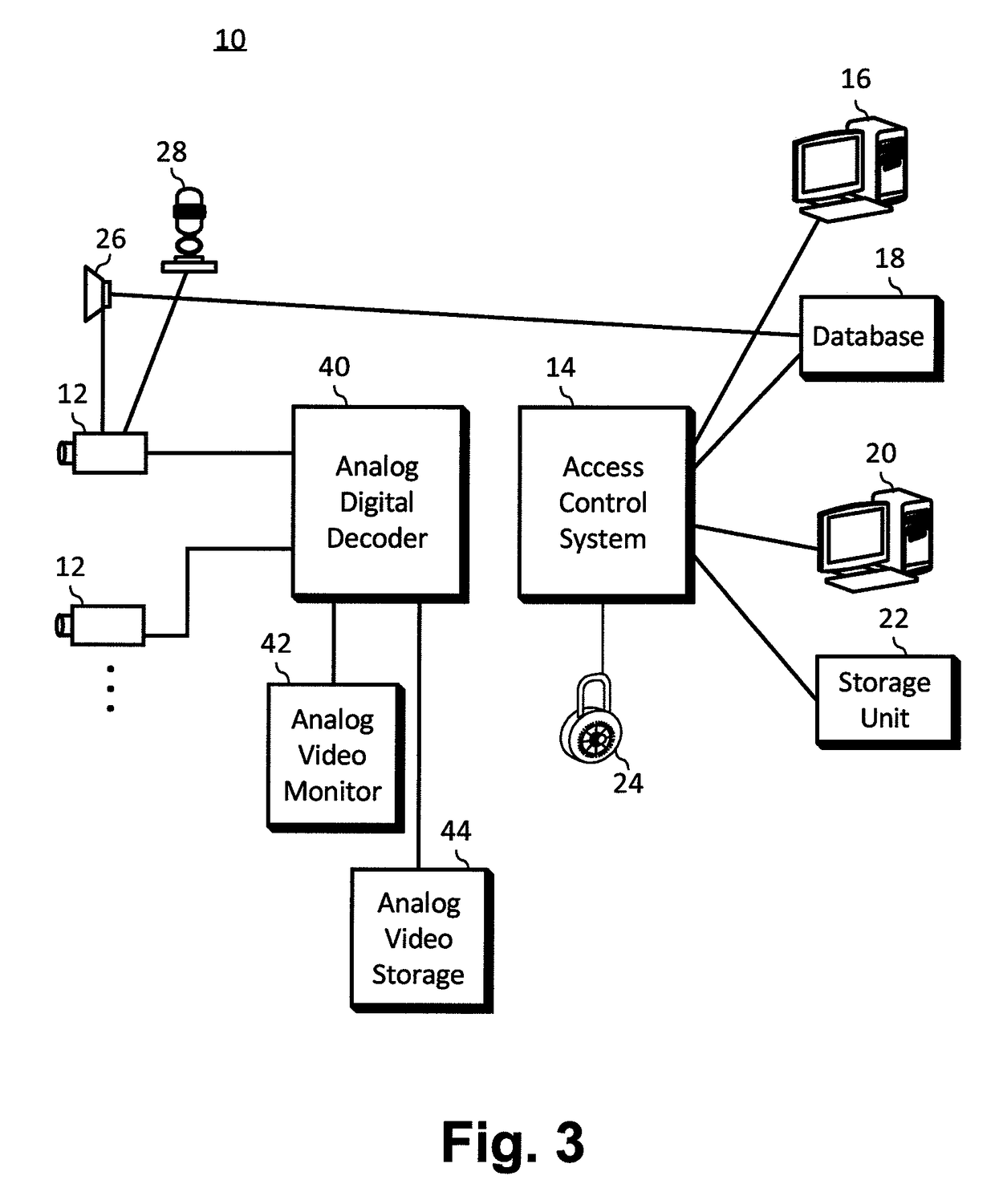Access control system with symbol recognition
a symbol recognition and access control technology, applied in the field of access control, can solve the problems of difficult to use lost or stolen the simplest security element is typically the hardest to automate reliably, and the difficulty of losing or stealing cards to access the system
- Summary
- Abstract
- Description
- Claims
- Application Information
AI Technical Summary
Benefits of technology
Problems solved by technology
Method used
Image
Examples
Embodiment Construction
[0024]The access control system 10 diagrammed in FIG. 1 consists of a camera 12 connected to a computer network 14. The camera 12 is designed to take digital images of identity (ID) badges 30 (shown in FIGS. 2a, 2b, and 2c) and individuals with its field of view. Also connected to the computer network 14 are a badge reading computer 16, a database 18, and an access control computer 20.
[0025]In operation, the camera 12 scans an ID badge 30 (shown in FIG. 2a) and sends the resulting digital image into the computer network 14. The badge reading computer 16 interprets the bar code 36 on the ID badge 30 and retrieves information about the badge and badge holder from the database 18. The database information is passed to the access control computer 20 where an operator determines if access is to be allowed. Alternatively, the access control computer 20 can retrieve the information from the database 18 after receiving the bar code interpretation from the badge reading computer 16. The digi...
PUM
 Login to View More
Login to View More Abstract
Description
Claims
Application Information
 Login to View More
Login to View More - R&D
- Intellectual Property
- Life Sciences
- Materials
- Tech Scout
- Unparalleled Data Quality
- Higher Quality Content
- 60% Fewer Hallucinations
Browse by: Latest US Patents, China's latest patents, Technical Efficacy Thesaurus, Application Domain, Technology Topic, Popular Technical Reports.
© 2025 PatSnap. All rights reserved.Legal|Privacy policy|Modern Slavery Act Transparency Statement|Sitemap|About US| Contact US: help@patsnap.com



